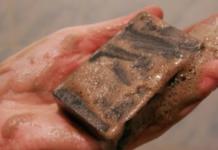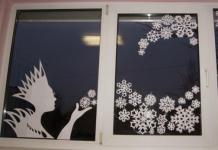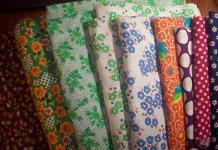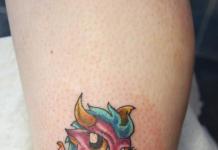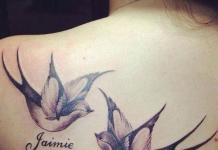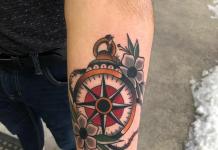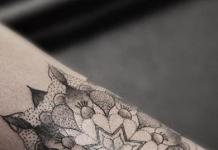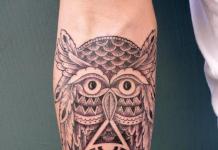Who will benefit from the article
- For beginners who are determined to go hiking
- Those who go on a multi-day hike for the first time and want to buy equipment themselves
- For lovers who already have an idea about the right shoes, to systematize knowledge
- Critics who like to argue in the comments
- Experienced Super Professionals
- Dinosaurs who consider canvas and berets to be the best friends of a tourist
Main
Shoes- the most important element of equipment, it is permissible to treat it mediocre only for the first simple exits. If your friends invited you on a weekend hike, you can put on your favorite sneakers, and maybe you are lucky, and you will feel all the pain and suffering from bad shoes the first time. And if not, then you will go on a more difficult hike with the confidence that you don’t need to wear anything special on your feet, remembering the previous sunny hike along the paths of some national park. And now, already in difficult conditions, serious problems can appear, and the feet worn into the blood are nonsense. The fact is that on a hike, your shoes are like a car during a road trip: the more reliable it is, the less likely it is to break down, which threatens to stop or, in the worst case, an accident. It is the same with shoes, the main thing is to realize this before the hike, and not in the middle of the route, in the deep forest or on a high mountain.
What is the difference between hiking shoes and city shoes?
“I wore the exact same sneakers for 5 years!” - my frustrated comrade claimed on the second day of the trip, looking at the completely peeled off sole from both sneakers at once.
We will not scold city shoes for poor quality, especially since this is not so. What is meant for the city can walk the streets for years. In the campaign, a number of additional loads appear, which ordinary sneakers cannot withstand. Multidirectional loads on descents and ascents, regular contact with tree roots and sharp stones, a lot of water and moisture, and plus 10-15 kilograms of additional backpack weight. Accordingly, when designing shoes for tourism, various methods are used to resist these destructive factors. These are reinforced seams using strong threads, and fundamentally different materials, including shoe glue, and most importantly, thoughtful design reliability, while design is always a priority for city shoes. Hiking shoes are tougher, stronger and much more comfortable (we are talking about using them on a hike).
Types of footwear for tourism
There is no shoe in which you will feel equally comfortable in fundamentally different conditions, so before buying you need to decide where and how you will use it.
Equipment is not mathematics, so there is no single formula by which hiking shoes are classified. Moreover, brands, competing in the ingenuity of advertising moves, often introduce new types and subspecies, finally weaving the already confusing terminology. We will not complicate things with you, but simply build a chain of supposed conditions of use from simple to complex.
1. Quite simply, no obstacles, no terrain, no backpack.
This applies to urban tourism and simple travel. Yes, there are such shoes too, and they are much more comfortable than fashionable urban items. In summer, these are sandals, open sneakers or light sneakers with a mesh, and for cold weather, insulated sneakers and boots. Unlike ordinary city shoes, specialized shoes have a comfortable anatomical sole and much more wear-resistant materials (we will talk more about technologies and materials below). Among manufacturers, such terms as Life style or City style shoes are often found, and often they look no worse than fashionable sneakers from famous brands.
2. Simple, but possible obstacles, not paved trails light backpack.
This is where we need a little protection. For example, there are sandals with a closed impact-resistant toe that will protect your fingers from damage. The simple, lightweight mesh on sneakers can be torn by tree roots or bushes, so you need to look in the direction of more durable upper materials. Western manufacturers often call such shoes hiking, and sometimes even shoes for light trekking.

3. Difficult, sloping terrain, difficult paths, many obstacles, a noticeable weight of the backpack.
As soon as the terrain gets into the expected conditions, elevation changes, and more simply, when you are going to go to the mountains, you will need additional protection, in addition, the weight of the backpack begins to put a serious strain on the ankle. First of all, it is important to fix the leg, preventing dislocations and sprains. Hiking and trekking boots of medium height cope with this. Often in foreign names you can see the word middle or mid, which actually means medium in height. In addition, the high height, combined with moisture-resistant materials, helps keep your feet from getting wet. Accordingly, the requirements for wear resistance of such boots increase significantly. Here you can choose light and soft (relative to more specialized mountain boots) trekking boots.
In some cases, you can opt for stiff high mountain boots, which will provide you with even more protection, but due to the extra weight and greater leg support, you will be more tired on sections with good trails. In this connection, I repeat once again, think carefully about where and how you will use your shoes.

For example, for a hike to the foot of Belukha (the highest mountain of Altai), heavy boots are not necessary: since the route is very popular and passes along a well-trodden path, light trekking boots of medium height will be enough. At the same time, to climb Belukha, you need a serious, hard boot with the possibility of attaching "cats". In this case, you can walk to the foot in light sneakers, and put on a specialized boot for the ascent. Of course, carrying an extra pair of shoes is not easy, but sometimes this is the most correct option. And if you start doing it professionally or at least regularly, then your ankle will be more trained and will allow you to use light and soft trekking boots more often.
4. Very difficult - sports and extreme climbing
Here the main rule is reliable protection of the legs from any damage and weather conditions, despite the weight and even comfort. Ranging from simple mountain boots that have increased rigidity to high-tech multi-component boots for climbing, these are all professional equipment that need to be disassembled in much more detail, which is beyond the designated scope of this article.

If suddenly you are going on a difficult categorical hike, first of all consult with the route leader about what kind of shoes you should use. If you are a leader, but for some reason you are reading an article for beginners, then I ask you, do not put the lives of participants in such danger find an experienced guide!
5. Not just walking.
Running shoes are a separate topic for the article, and despite the fact that they are also designed for active use, it is better not to use them on hiking trips. I especially don't recommend using highly advertised fitness shoes with foot destabilization - they may really stimulate your muscles to develop, but destabilization at the moment when you are climbing a mountain can be, to put it mildly, dangerous. Remember the simplest rule - to use shoes for their intended purpose: gathered for a race, yes, take running shoes, go hiking, take hiking shoes.
There are also a number of specialized models for outdoor enthusiasts. For example, while rafting, you will need special sandals that slip less on wet stones, dry faster and do not accumulate water inside. Climbing requires rock shoes, yachting requires non-slip boots, and cycling has contact and non-contact boots. In addition, there are also non-standard options such as five fingers from vibram, their concept involves preserving the natural sensations of walking and playing sports, with relative protection of the foot from damage.

Anatomy of a hiking boot or "Why are trekking shoes so expensive?"
External material
The task of the outer layer is to resist the environment, be sufficiently wear-resistant, but at the same time light, at the same time not let water through from the outside and remove moisture from the inside. All these are not easy tasks, and developers are constantly refining their models, which inevitably affects the final price.
I already wrote in detail about the materials in another article, this knowledge is applicable to shoes. It is worth adding that shoes are still often made of genuine leather or nubuck (treated leather), as this material is really wear-resistant. But synthetic materials in our time are able to resist nature no worse, and sometimes even more effectively. In addition, synthetics are much lighter than leather and dry faster after being completely wet. It is believed that the fewer individual parts in the material of the top of the boots, the more reliable it is, since the shoes are first rubbed at the seams. However, this should not be a deciding factor when choosing trekking shoes, as the seams in quality shoes are securely and in the right places, and the final cost is often cheaper than solid models.
The use of a membrane in shoes is justified, however, the care of the shoes must be appropriate. You should not have any illusions about the absolute impermeability of the membrane, as well as its ultra-high breathing ability. If you are interested in how the membrane works, I recommend reading the corresponding one. And here I note that the use of the membrane in trekking shoes has increased the comfort of hiking at times, and this is a fact. If you want to argue and say that the skin is cooler, then I even agree, but the skin is a kind of natural membrane, it also does not let water drop through, but it does let steam through; that's just the skin gradually absorbs moisture, and quickly dry it without consequences, it is extremely difficult. And of course, both the membrane and the skin, special impregnations come to the rescue, helping to repel moisture, and these impregnations must be periodically restored.

Sole
Perhaps the most complex and important element of any hiking shoe is its sole. The purpose of the outsole is to resist tucking in all directions, absorb shock, provide thermal insulation, protect against sharp objects, and perform reliably on a variety of surfaces, providing precise traction. Each task in good boots is solved by different layers, and the sole in this case consists of a whole sandwich of different materials.
Most often you will find the vibram badge on the sole in stores, but this is only part of the sole - the outsole, which is made of rubber of special durability. Vibram is a trademark under which many different soles are produced and not only (five fingers shoes, for example). Of course, the use of vibram is good, but manufacturers do not always use it correctly, and fakes have been around for a long time. You can protect yourself from copies only by buying goods in good stores that you trust.
In addition to the lower layer in contact with the surfaces, the sole may consist of a torsion element, a vibration damping layer, a heel caliper, reinforcing struts and other elements. Manufacturers pay special attention to the sole, and over the years, hundreds of types of designs have been invented using a completely different material. Are they needed? Certainly! All these elements are designed to protect your legs, and not only your feet, but also, for example, your knees (the vibration damping layer reduces shock loads), ultimately preserving your health.

Insole
An essential part of a good trekking shoe. Quality insoles have additional arch support and anti-pronation support, as well as an additional heel vibration damper and a breathable base. The presence of antibacterial treatment is also important, since in hiking and traveling there is no opportunity to change socks and wash shoes often. For especially cold hikes, as well as people with problems with blood vessels, there are insoles with electric heating.
However, the insole is a problematic place for shoes, but not through the fault of the manufacturers. Each person's foot is unique, so it is simply impossible to produce insoles suitable for everyone. Fortunately, the insoles can be changed and purchased separately, and in special cases it is possible to make special orthopedic insoles to order, but this is quite expensive.

Other
For lacing in serious models, metal loops are used, which are more reliable than textile and lurex, in addition, they provide easier and faster tightening of the laces. Synthetic insulation is added to winter options. Heavy-duty boots may have a fully rubberized bottom, and higher models have a raised welt for attaching ice climbing crampons. Climbing shoes have a complex multi-piece construction of a warm inner felt and a hard plastic outer layer, somewhat reminiscent of a ski boot. For various models, additional structural elements can be applied, on each of which I will not dwell, since there will be separate articles on professional and specialized options. Subscribe to the email newsletter, you might be interested.
Travel footwear brands
In general, there are quite a lot of manufacturers of good shoes, but unfortunately not all of them can be found on the Russian market. Here I will only list the most famous and most respected firms among compatriots:
Asolo, Lowa, Scarpa, La Sportiva, Meindl, Dolomite, Zamberlan, Millet, Garmont, lomer, Keen, Vasque, Salewa...
This is not a complete list, but rather one whose models I had a chance to touch personally. In addition to them, one can note salomon, sometimes producing good boots, but for some reason, reviews specifically for this company are always contradictory. Also, shoes are often produced by so-called multi-brands, which make all the equipment without specializing specifically in shoes, for example mammoth(Raichle), American The North Face or German Jack Wolfskin.
I'm standing in the store, what to look for?
1. Clearly define the conditions for applying a future purchase
This is the most important step, as soon as you solve this issue, you will be faced with a choice of at best a dozen pairs (speaking of a large store, in my city there will be 2-3 options at most).
2. After solving the first point, you will only have to try on all available options
Absolutely everything! Do not think about appearance, this will be the last factor when choosing. Remember: hiking shoes should be as comfortable as possible.
Since the materials of trekking shoes are stronger and stiffer than those of everyday urban shoes, hiking shoes are much more difficult to "break in". That is, over time, it rubs very little, unlike the usual city shoes.
Wear both shoes, lace up well, go shopping in them. If you feel real discomfort, take it off! If in 15 minutes you feel something is wrong, in many days and kilometers it will multiply many times over! Conversely, if the first use did not cause discomfort, most likely the boot will suit you well. Never listen to advice about the comfort of certain models, human legs are as different as our faces. What is convenient for one person may be a bucket of nails for another.
3. Get the right size
You can’t take it back to back, the standard rule is: completely relax the laces and, inserting your foot inside, move it forward so that your fingers touch the front wall, while your index finger should freely enter between your heel and the back of the boot. This way, when you lace up your boot and the heel snaps into place, your toes will have plenty of room in front. Failure to comply with this rule threatens with calluses and pain in the fingers after long descents. Don't pay attention to the size numbers, just take according to your feelings.
Also pay attention to the width of the last and the feel in the heel area: it should not hang freely up and down - this means that the boot is too high for you, try lacing the boot, if the heel still comes off the sole, take the next model.
4. If you don't already have one, get a special trekking sock and try it on with it
The special sock has bulges in places subject to heavy loads, which reduces the likelihood of chafing. In addition, trekking socks are often better at wicking away moisture. If you intend to use the boot in cold weather, consider wearing a thick sock, and you need a small amount of room inside the boot, which in summer can be compensated with a thicker insole.
I bought shoes, what else you need to know
After you have gone through all the stages of choosing trekking shoes, you need to break them in properly. Did you read the last sentence well? Necessarily! To carry before the first serious campaign! This is not an urban soft rag: the more serious hiking shoes, the more thoroughly they need to be broken in!
A heavy trekking boot needs to be broken in for more than a dozen days, if you don’t want to do this or for some reason you can’t, then promise that you will remember this article, come back and send me a photo of your corns after the hike. Then I will compile a gallery of mistakes of modern tourists.
For pre-breaking in, short, half-hour walks around the city will be enough, so that the hard materials begin to rub against your foot, but have not yet had time to rub.
Shoe care
Now it is very important not to ruin what you have been choosing for so long. And the most common killing of shoes is drying using burners, fires, hot stones, batteries and other heating elements. You can dry shoes only at room temperature, in a natural way. The only thing that can be used is inserting crumpled paper inside, which will absorb excess moisture. Even in the open scorching sun, heavily soaked shoes should not be placed. If you do not follow these rules, the materials of your shoes will deform, crack, the glue will lose its strength, as a result, at best, you will again have to endure regular corns, and at worst, you will lose your shoes altogether.
Of course, it is unpleasant to put on wet shoes in the morning, but while you are walking, there will be no discomfort in good shoes, and a thick trekking sock will help against the formation of corns in a wet pair of leather boots. In addition, if the rain continues to fall, then there is simply no point in spending huge efforts on drying and risking boots.
Links to other sites
I propose to continue the educational program and read articles on the same topic from other resources. I find it really helpful to read the alternatives, so you can better remember the most important points.
- Article - a review on a popular site among professionals - risk.ru
- Translation of an article by American traveler Brandon Lampley, who went through all of America "through"
- Review of the personal collection of shoes of a good traveler - Dmitry Kovinov
- A good review on the pages of LiveJournal 21 manufacturer of travel shoes
P.S.
It turned out a lot of text, but I hope this will help in choosing your faithful companions, and you will walk hundreds or even thousands of kilometers with them through the most amazing places on our amazing planet! The more carefully you prepare for travel, the less things will distract you from true pleasure. Enjoy your hikes, take care of your shoes and they will save you!



And they immediately
Leaving your worries behind
followed him into the mountains.
(Matthew 4:20)
After the first trips, any tourist comes to the conclusion that it is necessary to choose more comfortable boots for the mountains: uncomfortable shoes and bloody blisters can discourage the desire to travel for a long time. We will help you make the right choice. For ease of reading, we have divided this article into three parts:
Part 1. Climbing shoes. Story
Part 2. Choosing shoes for hiking in the mountains
Part 3. How to buy shoes for mountain tourism (did not fit, but we will publish separately)
What hiking shoes to buy? To answer this question, there is a small digression into history: what our ancestors traveled in. Note that we managed to write such a section only after searching for references to “who was wearing what”. If you need to read "what shoes to take for hiking", then you can skip "Part 1" and go directly to "Part 2". If you already know what shoes to buy, but the prices in the store are a little shocking, and you don’t know where to buy, then go to “Part 3”.
PART 1. SHOES FOR CLIMBING. STORY
In general, if you look at information about shoes for tourism and travel, then this place was traditionally occupied by boots. They have a high top, which means that dirt and small pebbles do not get inside. They are easier to make. In fact, the manufacture of boots is seen by the average person as a “wrapping” with fabric or leather in the shape of a leg, followed by attaching the sole. Boots in general are similar to boots, but they use elements such as tongue, laces, eyelets (these are holes where laces are threaded) in the design, which means they contain more elements. Although such ancient finds as shoes from the Areni cave (this is in Armenia), indicate that shoes may have appeared even before boots. It just hasn't been widely adopted.
Shoes from Areni Cave. First boots
For a long time, there were no special hiking shoes, and travelers used any that came across with a claim to durability. And what did the first polar explorers travel in? The first expeditions to cold regions adopted local inventions: they used high fur boots or felt boots. And if high fur boots came to us from the Northern tribes, then felt boots - from the East, from the Mongolian settlers of the Golden Horde. The cheapness of felt boots led to their popularity: it is much more profitable to cut a lamb many times and make many felt boots than to use the skin for a limited number of high boots, right?
Tenzing Norgay (left). These shoes with laces are shekeltons
The first step towards double-layer boots and the conquest of Everest was made by the British, more precisely, by Sir Ernest Shackleton, who figured out how to take the best qualities of high fur boots, felt boots and boots for his polar expeditions. It is not known for sure whether he did it himself, but shoes of this design are referred to as "shekeltons". Inside the boots, a skin with turned inside out fur is glued or inserted. Outside, the felt boots with the help of lacing are covered with a tarpaulin soaked in rubber dissolved in gasoline (for waterproofness). Such a “stocking” is pulled on and fixed with lacing. This also achieves the fact that the shoes are less blown. It was in such shoes that Tenzing Norgay went to storm Everest. By the way, in our country, in Soviet times, due to a shortage of literally everything, the climbers of the Gusev team went to drop fascist banners from Elbrus in felt boots.
Gusev's group storms Elbrus (1943) to throw off Nazi banners
A special manner of movement of a climber in such shoes was also invented: so that climbing crampons do not move to one side while walking (the lower part of a round felt boot), steps were taken alternately with the inner and outer sides of the foot. Even in such "backward" shoes by today's standards, they managed to make the most difficult ascents. However, she also retired and was actually replaced by a membrane: in the second Himalayan expedition of the USSR, Vasily Senatorov in the book "Traverse" lamented that the earlier appearance of boots with Gore-Tex in our country would have saved a lot of climbers' legs.

Membrane Gore-Tex (Gore-Tex). Principle of operation
We note an important detail: in order for the membrane to work correctly, it is necessary to clean the shoes with warm water with a soft brush and use a special cleaning agent.
Without care, the membrane will simply stop working, as it will become clogged with fat from the legs and dirt from the outside. Also, so that moisture does not linger, special trekking socks are needed. Not cotton or wool. Previously, such a fabric was contemptuously called “synthetics”, but now, given its important hiking qualities, it is easy to wash, dry, wear! When choosing between synthetics and cotton, feel free to take the first.
Sole Vibram or "Vibram"
If you carefully examined the shoes in a tourist shop, you noticed a bright yellow octagon with the inscription "Vibram" on the sole. Oddly enough, but it was the death in 1936 of six climbers in the Italian Alps due to inappropriate equipment that led to the emergence of new mountain shoes. The founder of the company, Vitale Bramanis, with the support of Leopoldo Pirelli (tire developer), took up the development of footwear suitable for the mountains based on vulcanized rubber. This invention was tested in the ascent of K2 in 1954. Since that moment, it has proven itself in the best way, almost displacing the Trikoni that existed before.
Swiss mountain boots "Triconi"
Trikoni is already more of an antique, albeit a popular one with foreign farmers who constantly walk on wet grassy slopes when grazing. But the Soviet "vibrams" on the advice of colleagues, it is better "to pour epoxy into a cube, put it in a museum and thus collect it for normal shoes." Their time has already passed.
Summary (conclusion): the days of felt boots and homemade shoes are over. Of course, it is cheaper and you can repeat the trip to Elbrus in felt boots, but you should think a thousand times how much more convenient and better it will be. Take boots with Gore-tex and Vibram soles. They can approximately be operated from spring to autumn (without snow). That is almost the entire season.
PART 2. CHOOSE SHOES FOR HIKING IN THE MOUNTAINS
Lyrical digression of the author. After writing the title, I seriously thought about what this part would be about. After all, there are a huge number of shoes that can be considered tourist, which means that it needs to be systematized. Even with the previous part it was a little easier, especially after working with sources (including archeology). But it was necessary to understand all the new products on the market and exclude the mention of old, but still used shoes. It’s worth immediately cutting off “near-sports” and “off-road” shoes, but not tourist shoes: moccasins, galoshes ... And immediately exclude shoes without heels: sneakers, boots - it’s uncomfortable to walk in the mountains for a long time. There is probably no need to talk about shoes and city shoes.
Nowadays, shoes are produced that can be grouped according to seasons and off-road conditions: summer and heat, spring-autumn, winter and severe frosts, into three groups:
Summer shoes: slippers, sandals, sneakers.
"Spring-autumn": light boots (demi-season).
Winter and severe frosts: multilayer boots.
In the mountainous Crimea - in plastic slippers!
Slippers
We are interested in the option of plastic slippers. They are used by almost all tourists, indispensable for water procedures and in base camps during the holidays. However, some people, due to financial difficulties, use molded slippers as everyday shoes. It costs about 300-400 rubles and satisfies the only requirement: cheapness and water resistance. But the biggest danger of these shoes is the "bald" sole and smooth bed for the foot. Road dust (clay) forms, on contact with water, something like a “lubrication” in which the foot glides perfectly. That is, you seem to be standing on your feet smeared with soap on a tiled floor .... I think it's clear what's next. The desire to make sure that the foot was ventilated, but could not fly out of the "slipper", led to the invention of sandals ...
Tourist sandals. Comfortable and not hot.
Sandals
Sandals are an invention of the inhabitants of a hot climate: it is necessary to protect the bare foot from contact with hot sand, but in such a way as to fix the sole and prevent the foot from “flying out”. Fixation with straps or ropes. The picture shows hiking sandals with comfortable Velcro straps, soft insoles and anti-slip Vibram soles. The attentive reader noticed that the picture does not show sandals, but sandals. The difference between the two is in the closed toe and heel. Sandals are quite delicate shoes. Often the straps come off the sole, so you need to be careful with them. Do you want to overcome the fords in sandals and go to the bathhouse? Buy plastic slippers. They don't care about water.
Sneakers for the mountains
For the first time, sneakers have been talked about in our country since the Afghan campaign of the USSR. This lightweight shoe (about 600 grams per pair!) proved to be a more comfortable replacement for our boots in hot conditions. Tourists also appreciated it for the fact that it is practically “weightless” on the leg. There are a huge number of shoes that belong to sneakers, but only a part of them fit the definition of "mountain".
In hot Afghanistan, our military massively changed boots for sneakers
If you look closely at the sneakers, you can find the same Vibram sole, the same strong laces as the older brothers [boots], but a smaller bead. Of course, stones, dirt, water get into such shoes more easily, and it is also easier to “bite” insects (for example, ticks) and snakes. Therefore, if you are afraid of both, and they are found in your area, then it makes sense to purchase something more secure - with a higher beret. But the feet in such boots will sweat much more, which means that they will need to be dried more often - take off their shoes in the parking lots.
Drying shoes, socks in the parking lot and resting your feet is a must!
Sneakers are completely unsuitable for moving on snow, ice and deep mud. Their use with gaiters (to protect against snow) is ineffective, and they actually do not have moisture protection. That's not what they were made for. Moisture protection can be limited only by water-repellent impregnation.
Demi-season shoes
Also sneakers, but more powerful: with high berets (tops). Ideal for use in those times of the year when it is still warm and dirty, but there is no frost. Someone considers them as a transitional model from sneakers to winter boots, while someone singles out “trekking boots” as an independent class. Their features: external fabric such as Cordura (it is easier to clean than leather), low resistance to moisture (there may be no membrane at all), no insulation and the presence of a small rubber toe. Such shoes also differ in weight from the "winter counterparts" - about 500-600 grams per boot.
Asolo Jester - a typical representative of demi-season boots
Important! Since the manufacturer did not expect that snow-capped peaks would be stormed in them, they also do not have mounts for climbing crampons, which means that universal tether crampons (soft) must be used with them.
Winter shoes for the mountains
Winter is special. And in such conditions, the membrane does not work well, because the steam, leaving the boot, in contact with the outside air, instantly crystallizes and closes all ventilation holes. In addition, the best option for winter boots is a stronger leather (for example, nubuck). But suede should not be used - it is too delicate and the very first sharp stone will leave a "scar" on your shoes. Let's open a secret: suede is not used at all on real mountain boots.
The main difference between winter boots and demi-season boots is the presence of insulation. Most often, Thinsulate (pronounced as “Thinsulate”) is a synthetic material consisting of thin polyester fibers, which brings it closer in “warmth” to natural fluff, while maintaining its moisture resistance (almost does not absorb moisture).
Asolo Granit or simply "Granites". One of the most reliable boots in the winter class
If you look closely, you can see that winter boots are rubberized almost around the entire perimeter, and also have mounts for cats - special protrusions at the back and front (although there are models without mounts - they are a little cheaper). Anyone who has never worn winter boots will be a little wary of the fact that they hardly flex and are quite heavy. An unbending sole is necessary so that the stones are not felt, that the crampons are securely attached, and also so that in such boots one can easily stand on a small stone without straining the whole leg. For example, the “granite” model shown in the photo has a mass of more than 1 kilogram. One shoe.
Hiking shoes are one of the most important conditions for your comfort. Incorrectly selected shoes can be the main disappointment of your trip - you can rub calluses, injure your leg, or worse, frostbite your limbs.
To prevent this from happening, you need to choose the right hiking boots and then a heavy expedition will seem like an easy walk and will allow you not to be distracted by discomfort and fully enjoy nature.
What is the most comfortable hiking shoe?
When choosing hiking shoes, it is necessary to pay attention to a number of requirements:
- Firstly, shoes must be durable so that they do not stick out or spread out at the most crucial moment. After all, you can be many kilometers from civilization, and a torn shoe can ruin your entire trip.
- Secondly, it must be moisture resistant, as your health and comfort depend on it. Soaked boots can rub your feet more, which will cause discomfort. The saying "keep your feet warm" has a certain meaning: if your feet get cold, then a cold is almost inevitable.
- Thirdly, it should be comfortable, and not bring inconvenience, so that it sits well on the leg, but, not back-to-back, preferably worn out before the first trip.
- Fourth, shoes should protect the foot well from injury. It is desirable to have rubber protection on the toe, a durable and non-slip sole, fixation on the ankle joint from dislocation.
Shoe classification
Hiking shoes can be divided into three segments: winter, summer and autumn-spring. By classification:
- Walking;
- trekking;
- Off-road shoes;
- Extreme (for mountain climbing).
Tourist sandals
Most often, travelers opt for sandal shoes in the summer, but they can also be taken on autumn or spring hikes so that your feet can rest on halts.
They are great for crossing rivers, as they dry quickly and do not pick up moisture. trekking sandals are worn in simple hikes, where there is no need to constantly climb mountainous terrain, they are suitable for trails, trails, paths, and simple rough terrain.
Sandals may have a closed toe to protect the toes from injury. As with all hiking shoes, they must have a good sole with good tread and cushioning. The advantages of hiking sandals are in low weight, so as an addition, you can take them to your place if they are not the main hiking shoes, but on the halts the legs will rest and "breathe".
By classification: walking and tourist footwear.
Hiking shoes in summer - trekking shoes / boots
 Summer models are more like powerful sneakers than boots that resemble military boots. Suitable for hiking in the summer.
Summer models are more like powerful sneakers than boots that resemble military boots. Suitable for hiking in the summer.
In such shoes, the ventilation system is well developed, in hot weather the debate of the legs is minimized. Summer hiking sneakers can have a reinforced rubberized tram so that the toe does not get beaten. They have a light mass, some models can weigh about 600-700 grams, despite the powerful sole.
In summer models of hiking shoes, various membrane technologies are already widely used to remove moisture from the feet. The properties of membrane fabrics are such that they allow steam from the legs to come out, but moisture from the external environment is reluctant to let in.
Currently, this segment is the most popular among all hiking shoes and you can choose from a large number of models.
By classification: walking and trekking model.
Boots for off-season walks
 Suitable for use from mid-autumn to early spring. At a time when the weather deteriorates, increased humidity and dirt are possible, the temperature at night tends to zero, and during the day it is even more or less warm.
Suitable for use from mid-autumn to early spring. At a time when the weather deteriorates, increased humidity and dirt are possible, the temperature at night tends to zero, and during the day it is even more or less warm.
Hiking boots designed for such weather use Goretex technology membrane fabric, which has the property of being waterproof, while at the same time letting the steam coming from the feet through itself.
Vibram technology is often used for the outsole, which is characterized by durable rubber and excellent traction. The design of the boot provides ankle support.
And we considered self-inflating rugs.
In these models, you can go hiking in the summer, especially in the temperate zone, when the temperature during the day does not exceed 25-30 degrees Celsius. When choosing off-season shoes in the store, first of all pay attention to the sole and the quality of the material!
By classification: trekking shoes, off-road shoes.
Winter boots
 Winter shoes are more massive, the skin is thicker, more than 2 millimeters. The membrane technologies used in this type of footwear are diverse: from Gore-Tex to OutDry, from eVent to Dermizax ZR.
Winter shoes are more massive, the skin is thicker, more than 2 millimeters. The membrane technologies used in this type of footwear are diverse: from Gore-Tex to OutDry, from eVent to Dermizax ZR.
There must be ventilation so that steam comes out, otherwise, after stopping, the legs may freeze from moisture. The boots have a thick "tractor" sole with good grip on the surface, fastenings for crampons are possible.

An example of winter boots with crampons
When choosing, pay attention that the foot remains free, otherwise the leg will freeze. Keep in mind that thick socks are worn in winter, and maybe even two socks, but the leg should not hang out either. You can’t put on new shoes for a hike right away, you need to break them in at least a month in everyday life.
By classification: off-road shoes.
Extreme hiking boots
 Such shoes are designed for climbing mountains to a height of up to 5 thousand meters. Boots consist of two layers: outer and inner boot.
Such shoes are designed for climbing mountains to a height of up to 5 thousand meters. Boots consist of two layers: outer and inner boot.
- External- these are plastic boots that are absolutely waterproof, strong, practically not bending, with the exception of the heel, so that you can bend over, there are fasteners for cats, heel fixation, powerful lacing and Velcro.
- Inner boot. Insulation liner based on one of the technologies (Gore-Tex, OutDry, etc.), breathable, soft.
Thanks to this design, several air layers are created inside, the foot remains free and does not freeze. For example, the model shown in the picture is MOUNTAIN GUIDE PRO GTX by Garmont, designed for hiking in the mountains in all weather conditions in the winter at altitudes up to 5000 meters.
Membrane technologies
In hiking circles, discussions do not cool down on the topic, which membrane is better for shoes? To date, there are several types of technologies on the market, the most famous of which are: Gore-tex, eVent, OutDry.
What is the main purpose of the membrane and what does it give?
The main purpose is to remove steam and sweat from the body, through the material, and at the same time moisture resistance from the outside. Roughly speaking, the membrane allows moisture to pass through only in one direction - from the body, and also allows you to breathe.
Membrane OutDry

The OutDry membrane is used by outdoor apparel and footwear manufacturers. OutDry technology creates a waterproof breathable barrier. The waterproof layer is attached directly to the outer fabric, without seams and without any gaps to prevent water from penetrating inside.
The technology was developed by the Italian company Nextec SRL. On August 4, 2010, Columbia Sportswear signed an agreement to acquire OutDry TECHNOLOGIES SRL with Nextec SRL, which owns the intellectual property and other assets that include the OutDry brand.
For now Columbia uses this technology in the production of its shoes and clothing.
Gore-Tex membrane

Gore-tex is the most common membrane fabric on the market today for tourist clothing and footwear. The fabric consists of three layers: outer and inner (lining) fabric and membrane located between them. The main property of Gore-Tex is water resistance.
Gore-tex materials are based on polytetrafluoroethylene and other fluoropolymer materials. Fabrics under the Gore-Tex brand may differ in their properties, depending on the marking. But, as a rule, such fabrics are waterproof, breathable and windproof.
eVent membrane
 Breathable, steam wicking, waterproof fabric. In the cold season, it copes with its duties excellently, as well as in high humidity.
Breathable, steam wicking, waterproof fabric. In the cold season, it copes with its duties excellently, as well as in high humidity.
EVent is great technology, but it's more suited to outerwear than hiking shoes, and there's a reason for that. It has pores that can quickly become clogged on shoes, and then it loses its main properties of removing steam from shoes. In addition, it is not elastic enough, and in these indicators it is inferior to OutDry and Gore-Tex.
Summarizing, we can say that when choosing shoes, one should pay attention to OutDry technologies or Gore-Tex classics. When choosing outerwear, eVent will fit perfectly, which will be able to give odds in many respects to its competitors.
How to dry membrane shoes on a hike?
I want to tell everyone right away that in no case should you dry over a fire or put shoes next to it. Any heat is detrimental to the membrane.
Take a dry cloth and wipe the fabric from the outside, take out the insoles and put them in a dry place to dry. Inside stuff toilet paper or napkins. That's it, put your sneakers in some dry place and leave them. The paper will gradually absorb moisture and after a few hours everything will be dry.
If there is no money for special shoes
After all, not everyone goes hiking professionally and constantly, many may want to go once, test their strength and feelings from such a walk.
If your excursion is limited to a few days in the forest or a trip to some not very difficult terrain, then you can take any shoes at all: sneakers, sneakers, sandals. For a hike in the mountains, you need to find some kind of sneakers stronger. There is no question of any moccasins, weights, felt boots and galoshes, choose either boots or sneakers.
The most important - should be a heel so that when you walk for a long time, your feet do not hurt. With a flat sole, you can walk 5-10 kilometers without problems, then problems begin.
The main difference between specialized tourist shoes and simple ones is special waterproof materials, membranes, so if you are going to walk in a non-rainy season, then there is not much difference whether you have a trekking model on your feet or a regular one from the market.
- In winter, wear shoe covers so that snow does not get into the boot;
- Wear thermal socks - they wick away moisture and steam. Cotton socks absorb moisture;
- Winter shoes should be one size larger than yours. put on thick socks;
- If the legs are cramped, they will freeze faster.
Manufacturers and brands
Today there are many different manufacturers. When choosing shoes for yourself, especially for hiking in the mountains, pay attention to such companies:
The North Face, Garmont, Columbia Sportswear Co, Merrell, Salomon, Timberland, Vasque, Lowa, Keen
By purchasing goods from these manufacturers, you can be sure of the excellent quality of the product and that your sole will not fall off halfway.
How to choose...
To choose the right shoes, you need to try on the maximum number of pairs. The trekking boots of your dreams will be:
- match your itinerary. For example, in a one-day country walk you don’t need shoes at all, sneakers are also suitable, unless of course you are more comfortable in boots.
- Boots should fit perfectly. Choosing a good last is a key moment in the selection of shoes.
AlpIndustriya's 25 years of experience in selecting shoes for customers is reflected in this article and will help you choose the most comfortable pair correctly. When writing this guide, we focused on our experience of climbing, trekking and hikes of various categories, as well as the experience of our clients.
First, we will sort out what trekking boots are, the design features of the boots and the nuances of choice. Surely, entering one of our stores and seeing a floor-to-ceiling wall filled with different shoes, your eyes widen. On the site, in the section of trekking shoes, the choice is even greater, and you feel that you are lost in this variety. The purpose of this article is to take you from the point “I don’t know what to choose from this mountain of shoes” to the point called “These shoes fit me!”
Classification and technological features
Types of trekking shoes
.jpg) Trekking shoes: Low, durable sneaker with a special outsole designed for rugged terrain, with a well-cushioned midsole and a flexible inner sole. They are ideal for weekend hikes and longer hikes with lighter loads. Some experienced skiers use them for more difficult routes.
Trekking shoes: Low, durable sneaker with a special outsole designed for rugged terrain, with a well-cushioned midsole and a flexible inner sole. They are ideal for weekend hikes and longer hikes with lighter loads. Some experienced skiers use them for more difficult routes.
Shoes for medium and light trekking: medium or high boots, still have a well-flexible sole, but fit and support the foot better. Designed for weekend hikes, with a 40-60 liter backpack, or for long routes of a low difficulty category.
Heavy trekking shoes: These boots are made for serious hiking with enough weight on the shoulders, for multi-day trekking, light mountain routes. They are tall, very durable, and with a minimally flexible insole. As a rule, they have a rubberized toe or full rubber around the entire circumference of the boot along the sole, and even sometimes a back welt for cats.
Climbing shoes: Stiffer and heavier, with a protective rubber band around the circumference (often higher than heavy trekking boots), always with crampon welts, sometimes with built-in gaiters, and also double (with a separate liner). There are models both from natural materials, and from synthetic and their combinations. They are used both for difficult mountain ascents and technical routes, as well as for climbing the highest mountains and the coldest points of our planet.
 Boot height
Boot height
Low: Does not fix the ankle, providing the leg with more freedom. They get more dirt, dust and sand. An excellent choice for traveling with light backpacks on routes you know.
Medium: Supports the ankle and protects against leg dislocations. It is recommended to use if the weight of the backpack exceeds 5-12 kilograms or a long trip is planned.
High: Excellent ankle support on difficult routes or in mountainous terrain. Also recommended for purchase when the weight of the backpack exceeds 12 kilograms or a long trip is planned.
Any boots must be broken in before the trip. Even if the shoes hardly break in, you need to not only get used to one or another pair as such and to the method of lacing, depending on the conditions of use, but also to let the shoes sit on your foot.
Upper material
These materials affect the weight, "breathability", strength and water resistance of the boot.
One-piece: Great breathability, very durable, good waterproof performance. Most often used in shoes for heavy and medium trekking. It is necessary to break in shoes with such a top that the skin takes the optimal shape of the foot. Recently, plain-dyed leather is increasingly being replaced by waxed leather with special processing and nubuck, as more durable and durable counterparts.
Combined: usually leather is combined with nylon or nylon mesh. These boots will be quite light and breathable, but they will get wet faster. They are also subject to wear, especially on loose surfaces. These models are usually cheaper.
Suede leather: similar to nubuck, but softer, which is why it is used on boots for light trekking and sneakers.
Synthetic fabrics: Polyester, nylon, or synthetic leather are increasingly found on modern models. As a rule, they are lighter, wear in and dry faster, and are cheaper. The downside is that they wear out faster due to more seams on the outside of the boot and generally less durability of these materials.
Waterproof: Many models are produced using different membranes (GORE-TEX® / eVent / SympaTex). These technologies ensure that the feet remain dry and comfortable in difficult weather conditions (for example: from moisture ingress and due to partial removal of moisture to the outside). The disadvantage is worse "breathability", but less wetness compared to models without the use of membrane materials.
We recommend using impregnation even if the boots have a membrane, as impregnation is necessary for the outer material in order not to absorb moisture and not become heavier and less dirty. This will help maintain breathability and water resistance, as the membrane will be less clogged with dust and dirt. You should also remember about the care products for shoes made from natural materials, which allows you to maintain the elasticity of the material and extend the life of the shoe.
Sole materials and shoe construction
The sole consists of 3 (or more) layers: sole itself- it has contact with the outer surface; middle part- absorbs shock loading (shock absorbers) and helps keep your joints from injury when walking with a heavy load; inner part- provides rigidity and distributes the load more evenly, also taking some of the load off your feet. In some models, the number of layers may be greater, and their alternation may be slightly different, but the overall picture remains unchanged - facilitating movement and minimizing stress.
EVA (ethylene vinyl acetate) and PU (polyurethane) are the most commonly used midsole materials. EVA is lighter and at the same time quite wear-resistant material with good depreciation. For better cushioning in different areas of the midsole, manufacturers can use materials of different densities. PU is harder and more durable, which is why it is most often used in heavy trekking and mountaineering boots. Whereas EVA is more common in lighter shoes.
The inner part or “caliper”, located between the bottom of the boot itself and the middle part of the sole (and in some models it is the part of the boot to which the sole is attached during production), is of two types:
"Scaly": small pieces of nylon or polyurethane located in part of the sole or throughout the sole. Most often used in trekking shoes or shoes for light trekking.
"Plates": thicker plastic plates that give the sole more rigidity and protect the foot from impacts with roots or stones.
Sometimes a combination of these two technologies is used.
The sole is most often made from a special rubber company Vibram. It must have a good grip on the terrain and can be of varying degrees of hardness. The less flex the sole has, the more weight you can put on your shoulders, and the more rugged terrain your boots can handle.
Most often, all components of the sole and boots are interconnected in a special adhesive way. This method is cheaper, faster, and more recently, more reliable than threads. Also, the glue creates additional rigidity for the sole. The only enemy of glue is high temperatures, when exposed to them, the glue can dry out. Therefore, we strongly do not recommend storing boots in the trunk of a car in summer or drying them on a radiator, by a fire, or near other heat sources.
Rubber processing. Some models are reinforced with an additional layer of rubber on the toe, and sometimes around the entire circumference of the boot. They do this in order not only to improve protection against getting wet, but also to protect the material of the boot from damage. These boots are more often used in very wet conditions or on difficult routes and routes with "dry".
Last - the most important criterion for choosing shoes
All technological advantages become negligible if the boot does not sit comfortably, so the last is the most important point when choosing shoes for trekking. To choose a good boot, you need to know 3 parameters of your foot:
Foot length: inside the boot, the toes should be free and easy to move, and there should be enough space in the front so as not to injure the toes on the descent. If you have any diseases of the toes or feet, pay special attention to this point.
Width: The foot should not move laterally inside the boot, nor should it be too tight.
Volume: The foot should fit comfortably in the boot, sometimes this can be solved with proper lacing.
The important point is the combination of all these parameters. It depends on this whether the boot will rub, whether the foot will be located inside the boot as the manufacturer intended. When the boot fits well, you should feel as if your foot is firmly held by someone's big hand, in the place where the lacing is. It is important to remember that in addition to lacing and the boot itself, a properly selected trekking sock plays a very important role. And to try on a particular pair of shoes should be with the sock with which it is supposed to be used in the future.
How to buy shoes the right way
- Get ready to buy
It is important to devote a lot of time to the selection of shoes, and try on the maximum number of models. In order for AlpIndustry's shoe selection experts to give you maximum attention, it is better to come to the store in the morning or afternoon on weekdays or in the evening on weekends, with a margin of time before the store closes to calmly try on the required number of shoes. But it should also be remembered that by the end of the day the leg becomes larger in size and closer to the state that it will be in field conditions.
- As a rule, our experts will ask you the following questions:
 What is your experience?
What is your experience?
Which region/route are you going to visit? What will the landscape be like there?
What is the expected weather like there?
What is the expected weight of the backpack?
Are there any features of the foot to take into account when choosing a model?
Are there brand preferences?
Shoes are one of the most important components of a successful trip. The comfort and pleasure that you get from traveling, as well as your health, depends on the quality and convenience of the boots. Since you are going to where no car will pass, and sometimes even a helicopter will not reach, then legs are the most expensive thing you have.
Before delving into the issues of choosing the right hiking pair, let's decide what it is for.
There are several types of shoes for outdoor activities and travel. Most often, in the most general form, alpine and trekking shoes are distinguished. Alpine, as the name implies, is intended for high-altitude mountain climbs, but for long walks under a backpack through forests and swamps, it is not very convenient.
Trekking shoes are a more vague concept. This may include both winter and lighter summer shoes, and intermediate options, and even urban ones, but in general, trekking shoes are called shoes designed for tracking, i.e. simple hiking trails in the forest and mountainous (not high-mountainous!) areas. It is distinguished by several features:
- good grip on a variety of surfaces;
- protection of legs from exposure to low temperature, moisture, mechanical impact of the underlying relief;
- fixation of the ankle;
- high wear resistance in mountainous conditions.
This is exactly what you need if you are planning a hiking autonomous trip in the mountains or forests, which does not include difficult ascents.
Trekking shoes and boots: what for what?
In summer, for a short hike in the forest, you can wear comfortable, durable sneakers. The best thing for this is not running shoes, but a hybrid of sneakers and trekking boots, made of durable water-repellent fabric and equipped with a tractor sole.
- Outer boot material
It must be durable and water repellent. To do this, leather or nubuck impregnated with a special water-repellent composition is used as the outer material. Nubuck, unlike leather, does not crack with frequent wetting and drying, and scratches on it do not spread. It is good if the toe and bottom of the boot are reinforced with durable rubber, which protects the foot from bumps and stones.
It is usually advised to choose shoes with a minimum number of seams, because the seam joints are the weakest places to tear and get wet. However, on some lightweight models of trekking boots, a large number of seams and inserts made of synthetic materials such as Cordura are allowed. Just make sure that the connecting seams are overlapped with multiple stitching.



